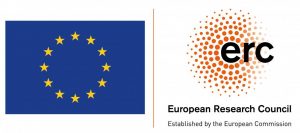Reeling in the Whirlpool: measuring the distance to M51 using Cepheids and a type-IIp supernova
2023-10
Congratulations to Geza Csörnyei from MPA in Garching who published the first Cepheid-based distance to the beautiful Whirlpool galaxy, M51. Geza used two very precise and very different distance indicators, classical Cepheids and a type-IIp supernova, to measure this distance. Each distance was accurate to about 3-4% and they both agreed very well. Interestingly, these distances reveal a previous distance based on the tip of the red giant branch (TRGB) method to be incorrect, likely because it was made in the wrong part of the galaxy where too many young stars are located. Importantly, this paper validates the methodology for measuring distances using the geometry of the explosions of massive stars. For more, see the paper by Csörnyei et al. (2023)!
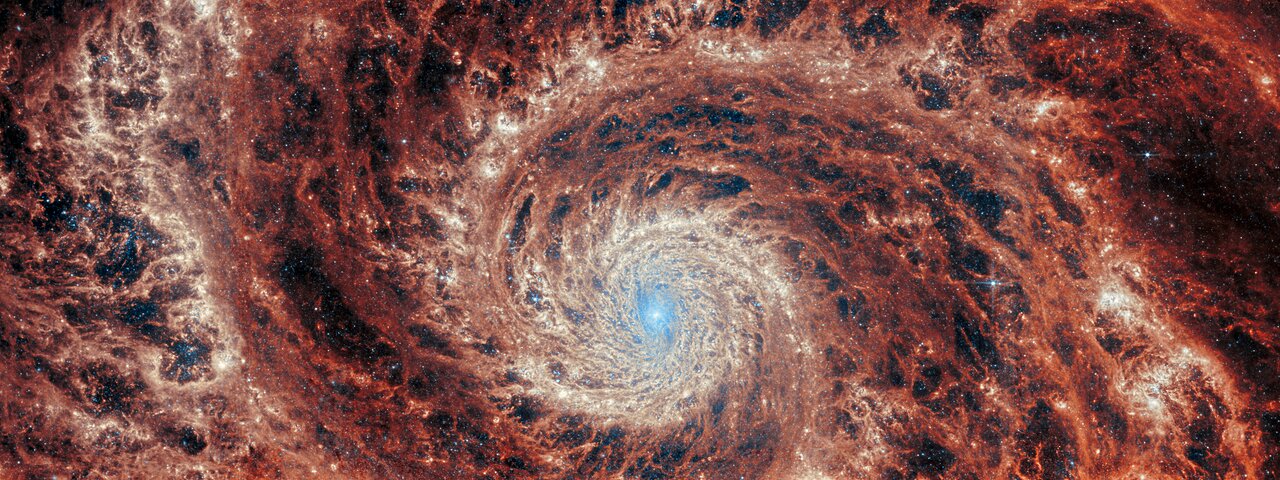
Using Red Giant Oscillations to map systematics of parallaxes measured by the ESA Gaia mission
2023-09 and 2023-12
Congratulations to Saniya Khan who measured the distances of more than 12,500 red giant stars using asteroseismology, that is, by exploiting the information that minute oscillations of the stars tell us about their structure and intrinsic brightness (Khan et al. 2023a). In a second article, Saniya used a subset of 3500 red clump stars to map out the systematic uncertainties of trigonometric parallaxes (distances) reported by the ESA mission Gaia (Khan et al. 2023b). Her work significantly helps to correctly interpret the accuracy of Gaia’s parallax measurements that form the backbone of the extragalactic distance ladder used for measuring the Hubble constant. Additionally, they will be useful for improving parallax accuracy in future Gaia data releases. The press release associated with these two articles made it to the EPFL landing page!
In the news today: The most accurate calibration for Cepheid distances
2023-04-04
Congratulations to Mauricio Cruz Reyes for his first paper on his PhD subject that was published today in A&A and is accompanied by a press release that even featured on the EPFL landing page! Mauricio’s work achieved the most accurate calibration of Cepheids for distance measurements to date using Gaia observations of Cepheids residing in star clusters. The improved accuracy afforded by the cluster Cepheids confirms and increases the statistical significance of the Hubble tension.
H1PStars at the International Astronomical Union’s Symposium 376 in Budapest
2023-04
We’re excited about the IAU Symposium No 376 on period-luminosity relations in Budapest, where almost the entire group will be presenting their work. Don’t hesitate to reach out to us to get in touch during the conference.
Coming up: July 2023 MIAPbP workshop on the Distance Scale
We are excited to announce the 2023 MIAPbP workshop on the extragalactic distance scale in the era of large surveys and the JWST. Registration is open until 31 October 2022, which will take place during 4 weeks in July 2023. We look forward to making this an exciting opportunity for active collaboration, so please make sure to fill in the Google form on the registration page.
COST Action CosmoVerse launched!
“Addressing observational tensions in cosmology with systematics and fundamental physics” is the subject of the new COST action CosmoVerse that just launched in Fall 2022. Richard contributes to WG1 – observational cosmology and systematics and as a Management Committee member. Check out the website here: https://cosmoversetensions.eu/
H1PStars at the 2022 RR Lyrae and Cepheid conference in La Palma
2022-09-24
What an exciting week at the 3rd RR Lyrae and Cepheids conference on La Palma, where Zoi Spetsieri, Shreeya Shetye, and Giordano Viviani all presented contributed talks, and Richard Anderson presented an invited review talk on the distance scale.
Welcome new PhD student: Bastian Lengen!
2022-09-01
It is a pleasure to welcome Bastian Lengen back to our group! After having done his Master project in this group at EPFL last Fall, he will now work on photometry of distant standard candles observed with the Hubble and James Webb Space Telescopes. Welcome back to the team, Bastian!
“Our place in the cosmos – from the Big Bang to life on other earths” featuring Nobel laureates Jim Peebles and Michel Mayor
2022-05-18
We hosted a very memorable public event entitled “Our Place in the Cosmos” at the SwissTech Conference Center on EPFL’s campus in Ecublens this evening. The event was booked out in less than 48 hours, showcasing the high interest of the general public in science and technology. The 2019 Physics Nobel laureates Michel Mayor and Jim Peebles presented the big picture of cosmology and our knowledge of distant worlds. Following their presentations, we had a round table discussion featuring Jim and Michel, as well as ESA Astronaut and EPFL Prof. Claude Nicollier, and EPFL astrophysicists Michaela Hirschmann and Richard Anderson. Chloé Carrière moderated the discussion with assistance from LASTRO director Jean-Paul Kneib, who also gave the welcome address.
The event was live streamed via YouTube, where it will remain accessible for posterity. The official event page is here. Fotos of the evening can be found in the EPFL Mediatheque.
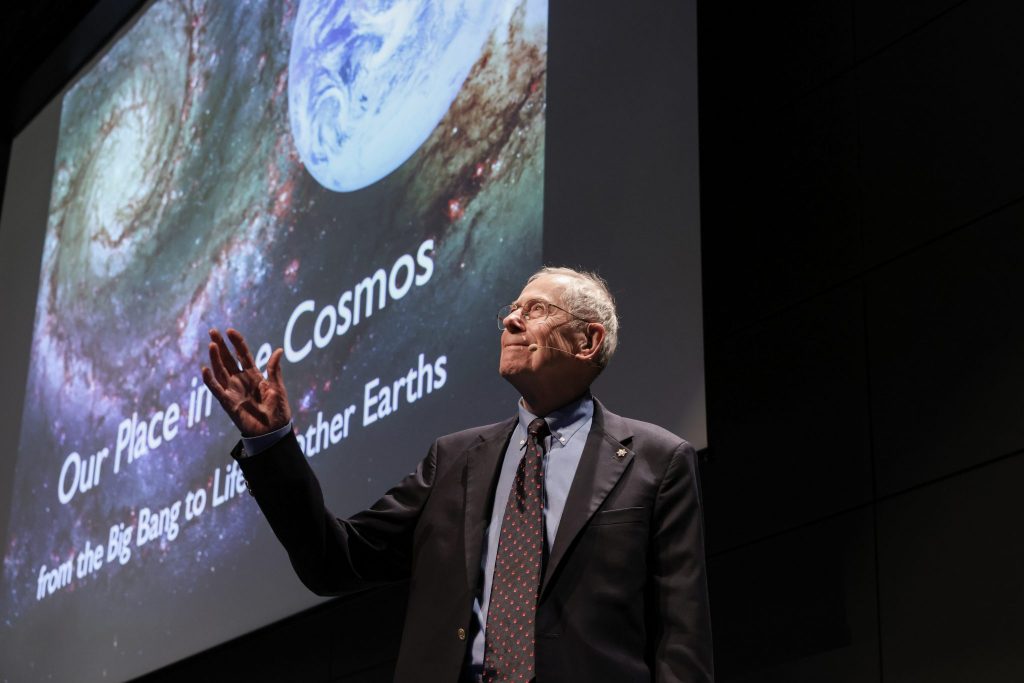 |
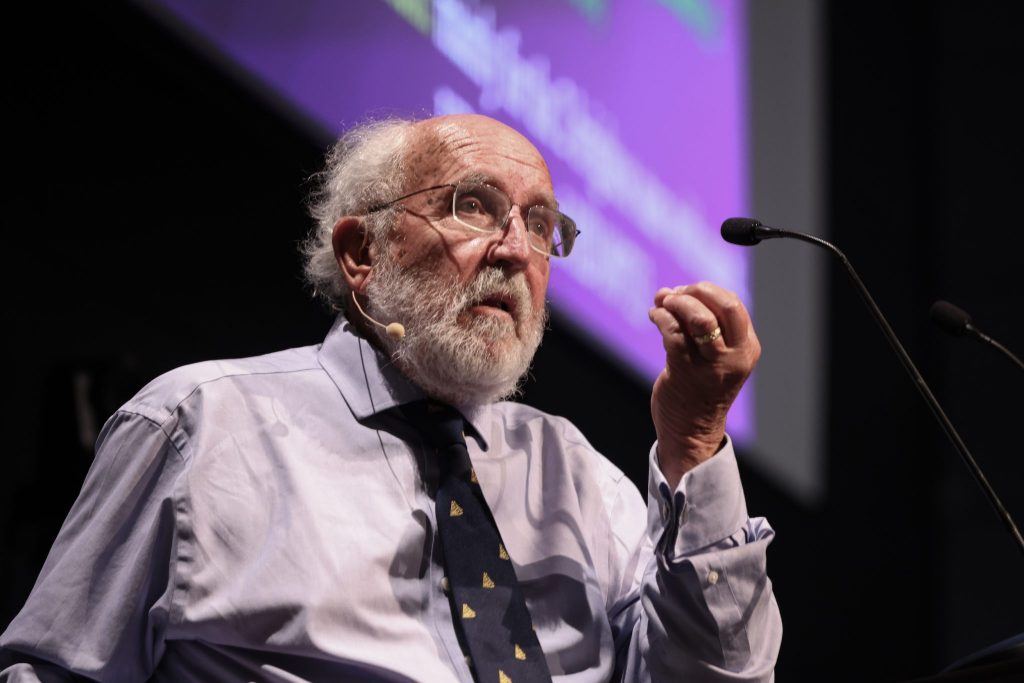 |
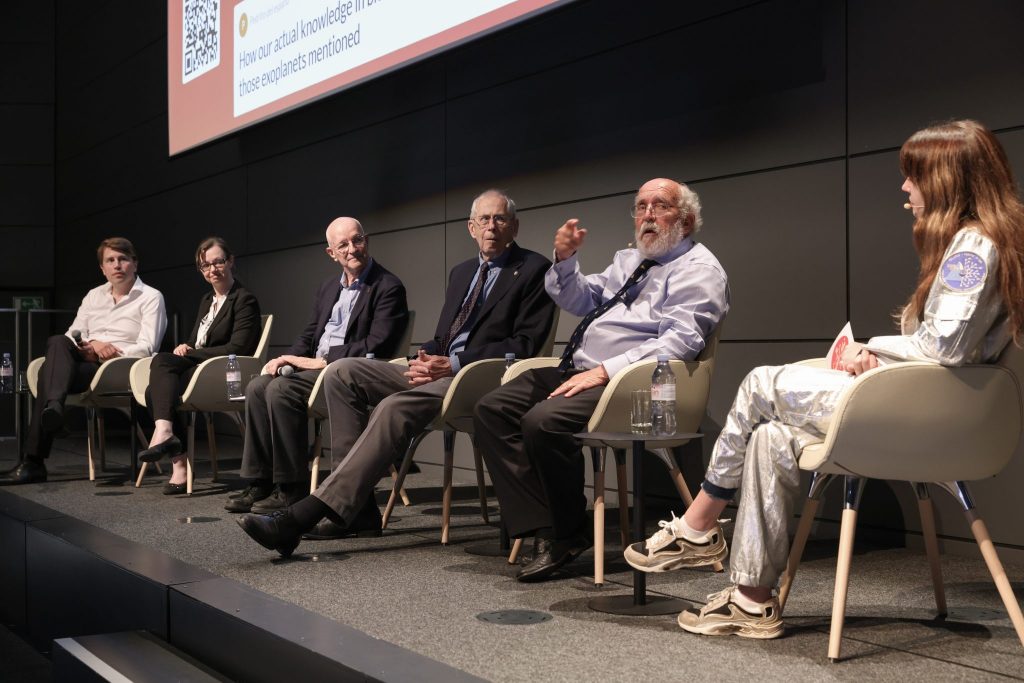 |
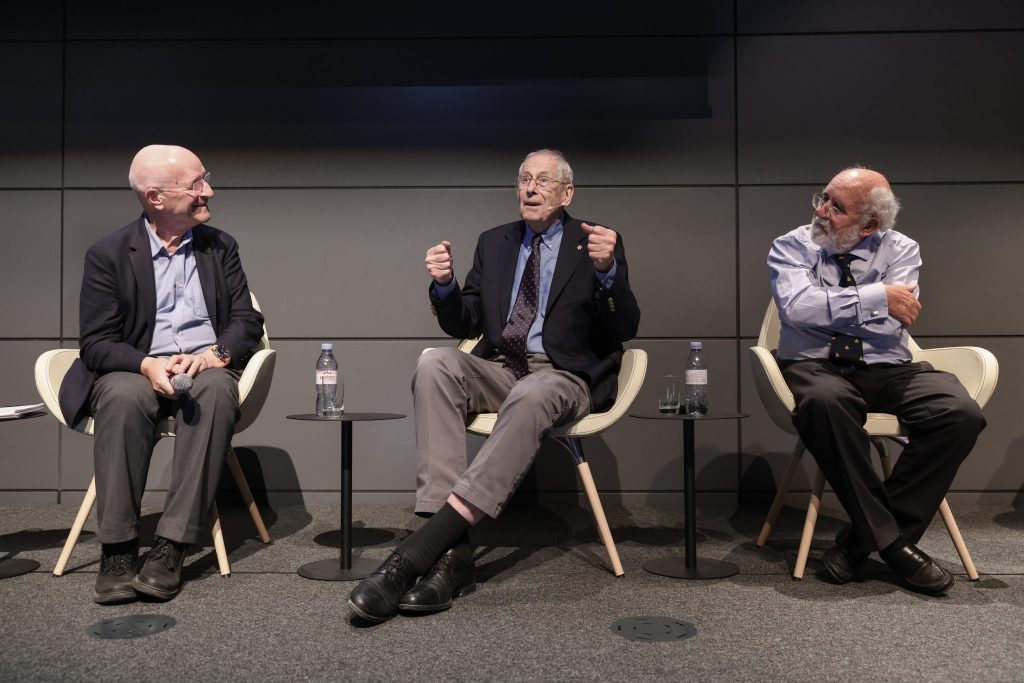 |
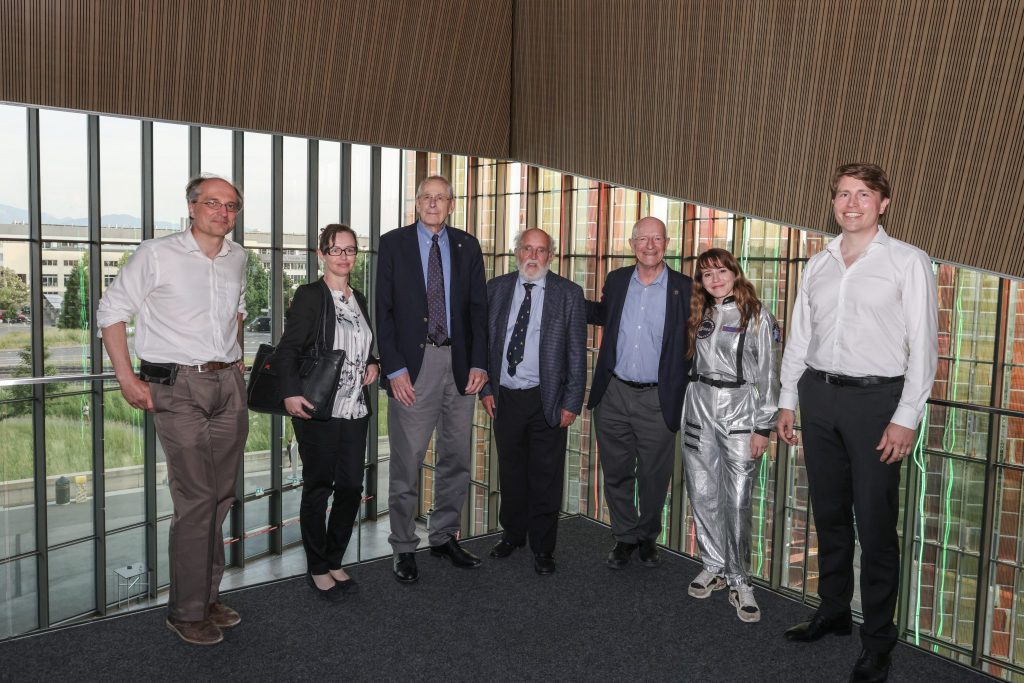 |
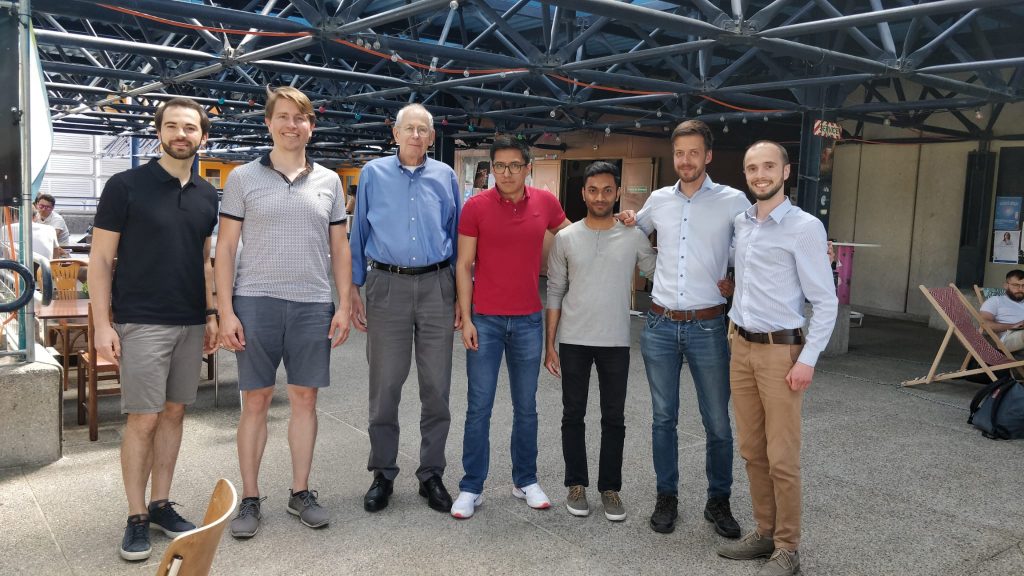 |
Welcome new team member: Nolan Koblischke!
2022-05-02
Nolan Koblischke is a physics and computer science undergraduate student from the University of British Columbia at Kelowna who joined us for a 3 1/2 month Summer internship to work on distance measurements using the tip of the red giant branch. Welcome Nolan!
Congratulations Bastian Lengen!
January 2022
Congratulations to Mr Bastian Lengen who completed his Master at EPFL with a thesis on the consistency of distances measured via Cepheids and the tip of the Red Giant Branch! Mr Lengen will keep contributing to the H1PStars team and is currently working on a publication to summarize his work.
Welcome new team member: Giordano Viviani
2021-11-01
It is a pleasure to welcome Giordano Viviani to the stellar standard candles and distances group. Giordano recently completed his master degree at LMU in Munich, Germany. The team is now completed, and we had a nice apéro at Sauverny observatory to celebrate. Welcome to EPFL, Giordano!
Welcome new team member: Mauricio Cruz Reyes
2021-10-01
It is a pleasure to welcome Mauricio Cruz Reyes to the team. Mauricio recently completed his master degree in Physics at La Universidad Autónoma de Zacatecas in Mexico. Welcome to EPFL, Mauricio!
Welcome new team member: Saniya Khan
2021-08-01
It is a pleasure to welcome Dr. Saniya Khan to the team! Dr. Khan is an expert in theoretical stellar physics and asteroseismology and recently defended her PhD thesis at the University of Birmingham, UK. Congratulations and welcome to EPFL, Saniya!
HST observations awarded
2021-07-01
We are happy to report that our application for 4 orbits of HST observations was successful (PI: Anderson, ID 16688). The new observations of Cepheid and TRGB populations in the megamaser galaxy NGC4258 will help understand systematics of distance measurements in the quest for a 1% measurement of Hubble’s constant.
Welcome team members: Zoi Spetsieri & Shreeya Shetye
2021-07-01
It is a pleasure to welcome Dr. Shreeya Shetye and Dr. Zoi Spetsieri to the team! Dr. Spetsieri was previously at Athens Observatory in Greece and brings significant expertise in time-series photometry using the Hubble Space Telescope. Dr. Shetye, who won the 2019 Solvay PhD prize for her dissertation, was previously at KU Leuven and the Université Libre de Bruxelles in Belgium, and is an expert in the spectroscopic analysis of cool evolved stars. Welcome to EPFL, Shreeya & Zoi!
The Geneva-EPFL Cepheid Radial Velocity Survey (GE-CeRVS) resumes
2021-04-01
The GE-CeRVS project has recently resumed collecting highly precise spectroscopic observations of Milky Way Cepheids using telescopes in Chile and on La Palma, Canary Islands. These observations are made possible by funding from the European Research Council (ERC) under the European Union’s Horizon 2020 research and innovation programme (Grant Agreement No. 947660).
The ERC Starting Grant H1PStars begins
2021-04-01
Today begins the H1PStars project whose goal it is to measure Hubble’s constant to 1% with pulsating stars. The project is funded through a Starting Grant from the European Research Council (ERC) under the European Union’s Horizon 2020 research and innovation programme (Grant Agreement No. 947660). Together with a team of postdocs and graduate students (to arrive starting in July), we will assess and reduce uncertainties of H0 measurements targeting an accuracy 1% to answer whether the Hubble tension – the ~9% difference between H0 measured from the oldest and youngest observable features in the Universe – is indicative of a cosmological crisis or measurement error.
New beginnings at EPFL thanks to an SNSF Eccellenza Professorial Fellowship
2021-02-01
Today begins the work of the Standard Candles and Distances Group (GR-ANDERSON) at EPFL. The PI, Richard Anderson, was awarded an Eccellenza Professorial Fellowship (award number 194638) from the Swiss National Science Foundation (SNSF) to launch a group focused on very accurate distance measurements based on stellar standard candles. This grant is aimed at qualifying the PI for a tenured or tenure-track position in astronomy. Besides leading the research group, the PI’s responsibilities include PhD and Master student supervision, as well as teaching at EPFL’s School of Basic Sciences.

